Swooping down in the nighttime, lurking in dark holes, fooling predators with fake heads, and coloring themselves in some of the most bizarre ways—creatures in Central Oregon can often seem downright spooktacular! Read on to learn more about some of our favorite spooky critters of the night!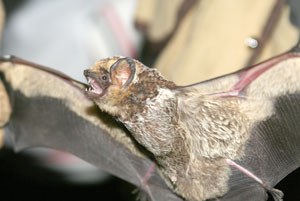
Bats might top the list of spooky creatures that come out at night! The hoary bat has a fittingly frightening name, but in reality it, like all our native bats, is harmless to people and is awesome at eating hundreds of insects on a warm summer night. The hoary bat (Lasiurus cinereus) is the largest bat in Oregon and is migratory, arriving in the region in spring and departing in fall, rather than staying to hibernate. The hoary bat is a very strong, fast flying bat that sometimes can be seen chasing other bats (although not to eat them, it too is an insect eater). Hoary bats are unique because they roost in the foliage of cottonwoods and other deciduous trees. They are not desert specialists but do frequent desert canyons as well as the west-side forests of Oregon. Learn more about hoary bats.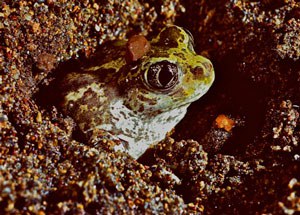
Lurking in dark holes, vertical pupils, and the ability to burrow with a unique-shaped foot--spooky indeed! The Great Basin Spadefoot (Spea intermontana) inhabits sagebrush steppe lands, salt-scrub deserts, and dry juniper-pine associations east of the Cascades. It is primarily active at night, with a diet consisting largely of insects. Indicative of nocturnal behavior, a spadefoot's eyes have vertical pupils, which quickly differentiates them from other Oregon toad species. This toad has an interesting adaptation giving it the ability to burrow rapidly backward into the soil using its "spade" on its rear foot. Sometimes, these toads have been found ten or even fifteen feet below the surface. So keep an eye out when you're in your deep, damp basements! Learn more about this fun amphibian.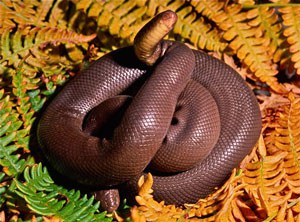
A spooky creature list isn't complete without at least one snake. Introducing this slow-moving, thick-bodied snake with a bluntly rounded tail that bears a remarkable resemblance to a secondary head. The rubber boa (Charina bottae) is sometimes called the "two-headed snake" or "double-ender." The snake uses this fake head to its advantage when confronted by danger. Shy and retiring by nature, a rubber boa will not bite to protect itself. Instead, it simply rolls into a tight ball, hides its head beneath the coils of its body, and then displays the tail as a decoy "head." So maybe this snake isn't so scary after all! While occasionally, a rubber boa will jab about with the tail, simulating a striking movement, the worst thing about encountering a rubber boa snake will probably be its smell! Learn more about the rubber boa.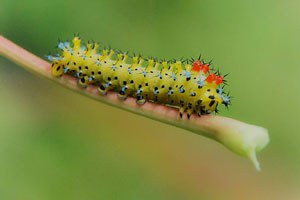
Straight out of a science-fiction movie, the caterpillars of a ceanothus silk moth (Hyalophora euryalus) are sure to shock anyone lucky enough to see them. The plump green bodies have true legs and spines along the back. Adults have a wingspan of about 10 cm and are reddish-brown in color. Adults are nocturnal and fly in the spring, so we're safe for now! Learn more about the ceanothus silk moth.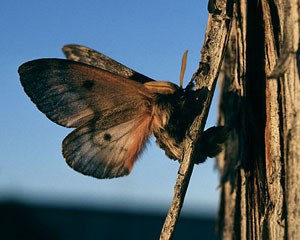
Hundreds, thousands, perhaps millions of these moths are coming! Pandora moths (Coloradia pandora) are drawn to the light and cover buildings, telephone poles, and even sidewalks. You may have seen lots of these moths as caterpillars this summer since they were out in force in June. Pandora moths are the culprit for widespread defoliation of ponderosa forests during outbreak years. Pandora moths have a two-year life cycle, so the caterpillars and moths are out on alternating years. Will next year be a spooky mass of moth year? We'll find out in the spring! Learn more about the pandora moth.
Learn more:


